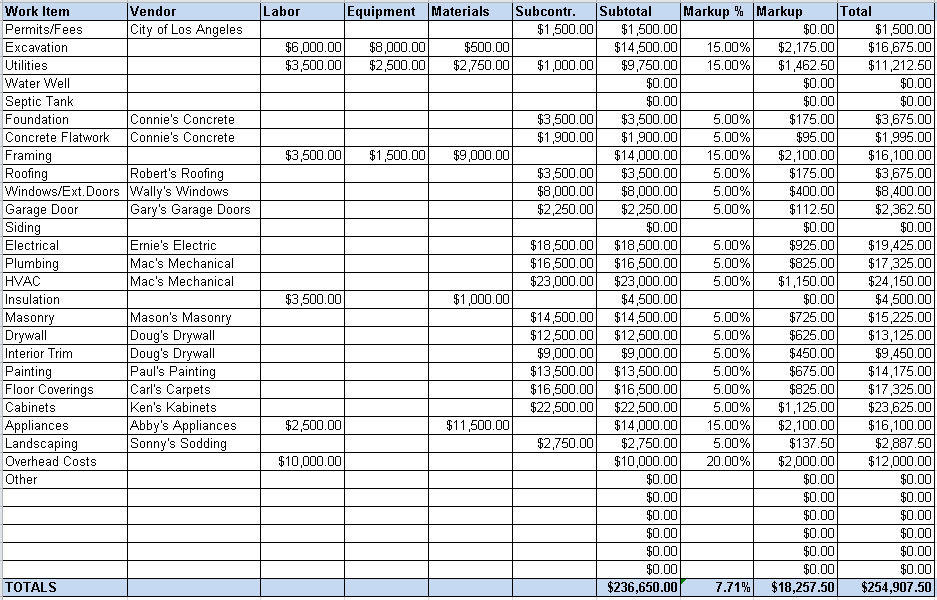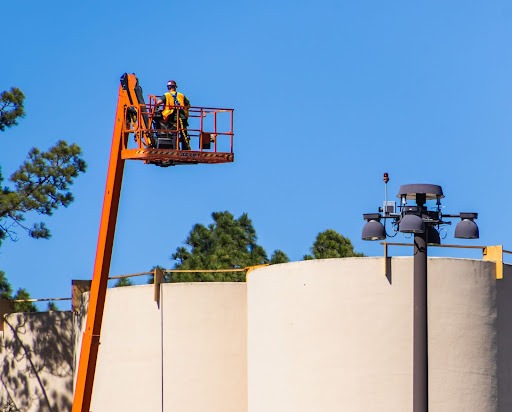When you are embarking on a building project, there are many terminologies that you come across, like quantity takeoff, construction takeoff, estimation takeoff, or material takeoff. As a professional, if you are involved in AEC architecture, engineering, and construction, then you must be familiar with the term quantity “take-offs,” and though the term has been around for a long time in the building industry, it reflects an important part of the planning process.
Quantity take-offs require a highly specialized skill set to perform data management appropriately. Any job can suffer if the required material quantities and prices are repeated or disregarded. Any job can suffer when necessary material quantities and reasonable prices are disregarded or repeated. Extensive and precise data gathering is essential for successful construction data management. Quantity take-offs have many other names:
- Construction takeoffs
- Material estimating
- Material takeoffs
- Material counts
- Quantity Surveying
- Estimating takeoffs
- Earthwork takeoffs
What is Quantity Take Off?
In the realm of construction, precision and accuracy are paramount. A meticulous quantity take-off (QTO) process is indispensable for any contractor when they need to initiate a project. This comprehensive process requires a detailed analysis of all labor, material, and material requirements, laying the foundation for accurate cost estimates Contractors ensure a thorough understanding of material needs—from steel and concrete to fixtures and fittings—through advanced construction plans.
Importance of Doing Quantity Take Off
Having a high level of precision in our ordering process not only ensures that we get the right amount of necessary items but also decreases the likelihood of ordering too much or too little. Using advanced tools and technology, like computerized software and scaled rulers, contractors are able to efficiently conduct QTOs (quantity takeoffs) with unparalleled speed and accuracy. This powerful combination of traditional methods and modern innovations guarantees that every single detail is considered, leading to streamlined construction takeoffs.
By prioritizing QTO, contractors can present bids that are both competitive and precise, laying the foundation for successful and profitable construction projects. Construction projects are also time-consuming and expensive. For projects to be lucrative, each and every cost must be accounted for and included in the overall price. For example, if the construction quantity takeoff is not performed, you may find yourself over budget, and overestimating can also result in losing the bids.
This process hinges on a meticulous analysis of blueprints, drawings, and project specifications, culminating in precise measurements. These measurements serve as the cornerstone for generating accurate cost estimates, a pivotal factor in any construction undertaking.
When is the best time to complete a quantity takeoff?
A quantity takeoff should be one of the first actions taken in the construction process, even before providing any quotes or bids. Without a detailed estimate, it’s impossible to determine potential profits or losses. Additionally, as changes are made, the quantity takeoff may need to be revised multiple times to maintain a satisfactory profit margin and satisfy clients.”
Methods of Quantity Take-Off
The following are some of the quantity-takeoff methods:
A. Manual Takeoffs: A traditional methodology
Manual takeoffs involve a meticulous measurement of quantities from blueprints and construction documents. This method, although time-consuming, provides a detailed and hands-on understanding of the project’s requirements.
Contractors often use tools like scaled rulers, digitizers, and highlighters to perform manual takeoffs. These tools aid in accurate measurements and annotations.
B. Digital Takeoffs
With the advent of technology, digital takeoffs have revolutionized the construction industry. Specialized software allows for precise measurements directly from digital blueprints, significantly expediting the process.
Digital takeoffs not only save time but also reduce the likelihood of human error. Moreover, they offer features for easy collaboration and data storage, making them an invaluable asset for modern contractors. These software tools offer features such as drag-and-drop, auto-count, and measurement tools, making quantity takeoffs faster and more accurate. Additionally, they promote collaboration among team members. The initial cost of implementing the software may be a drawback.
C. Unit Cost Estimating
This method involves assigning unit costs to different components and then multiplying them by the estimated quantities. By determining quantities and applying unit costs, total costs can be calculated. It’s a quick and straightforward approach that works well for conceptual estimates. However, it relies heavily on accurate unit cost data and may not capture project-specific details.
D. Material Takeoff
One of the fundamental aspects of quantity takeoff is the identification of all necessary material takeoffs. This includes everything from concrete, steel, and lumber to fixtures and fittings.
Each identified material is meticulously measured, and its quantity is recorded. This process involves assessing lengths, areas, and volumes as per the project’s requirements.
Experienced contractors understand the importance of factoring in waste and contingencies. This ensures that the final estimate accounts for any unforeseen circumstances or inefficiencies in material usage.
E. Assemblies Takeoff:
This method involves grouping similar components into assemblies, allowing for quicker quantification. Instead of measuring individual items, quantities are calculated based on predefined assemblies or systems. It streamlines the process, reduces redundancy, and is useful for repetitive projects. It requires careful setup of assemblies and may not be suitable for unique projects.
F. Subcontractor Quotes:
In this method, subcontractors provide quotes for specific parts of the project, contributing to the overall quantity of takeoff. Subcontractors provide estimates for their scope of work, and these are integrated into the overall project estimate. It relies on specialized knowledge and incorporates real-world pricing. It is dependent on accurate and timely subcontractor quotes and may not capture all project elements.
What Measurements Are Required?
Manufacturers customize the marketing of products to cater to their specific characteristics. Unlike standard purchases of nails or timber, different construction materials require varying measurement techniques. Here is a breakdown of the types of measurements needed:
1. Unit Count
Certain materials, such as lights, pipe fittings, hinges, doors, and power points, are evaluated in terms of units. For example, a unit of nails may consist of 500 pieces, while it can also refer to individual items like air conditioners or windows. Similarly, items of the same type but different sizes may have varying costs, which require grouping and tallying by size and cost.
2. Measuring Length
When it comes to items like pipes, electrical wiring, or steel pieces, they are usually sold in terms of their length. To determine how much is needed, a calculation based on linear length must be done.
3. Finding Surface Area
When estimating the cost of materials that cover a specific area, such as carpet, the surface area is determined by multiplying its length and width. This is a popular method for assessing the quantity of materials needed for a roof.
4. Calculating Volume:
For materials that fill a space, such as concrete or blow-in insulation, the calculation involves measuring the length, width, and height and multiplying them together. This results in a cubic volume, which enables accurate cost estimation.
5. Material Quantity Estimate
In the construction industry, materials like sand and backfill are typically measured and sold by weight, often in tons. To ensure enough materials are ordered, it’s common to overestimate the amount needed.
Why do contractors rely on quantity take-offs?
Contractors, the linchpin of any construction project, rely heavily on takeoff quantity for various reasons. First of all, it ensures planning accuracy by giving a precise grasp of the materials needed. This makes it possible for contractors to expedite the procurement process and greatly lowers the possibility of ordering too many or too few items.
The foundation of accurate cost estimates is quantity take-off, which is the second—and possibly most important—factor. It provides a thorough explanation of costs, enabling contractors to submit accurate and competitive bids for projects, which ultimately affects the project’s success.
Who All Can Benefit From Quantity Take-Off Method?
Quantity takeoffs are a vital tool for those in charge of spearheading the initial phases of a building project. The first crucial step in any construction project, whether it’s a single home or a large housing development with complex infrastructure, is determining the necessary costs and materials.
This involves a detailed estimation of materials, considering available resources, and foreseeing the overall expenses. Although architects, engineers, and construction managers may be the main parties involved in this process, it is essential for all individuals in the industry to have a solid grasp of material calculations and cost estimations. This applies to any construction project, regardless of the specific field.
Material takeoffs are a critical step in kick-starting the bidding process, rather than a mere formality that comes at the end of the project. The aim is to provide a sound contract based on precise financial and material data. The following professionals greatly benefit from conducting material takeoffs:
- Urban master planning and smart city designers
- Tunneling and subway architects
- Residential home builders and renovators
- Rail and metro transportation engineers
- Offshore and marine architects
- Landscapers and landscape architects
- Highway and road engineers
- General contractors and construction managers
- Energy and utility contractors
- Civil, mechanical, and structural engineers
- Architects and all building design professionals.
Navigating the Challenges
Essentially, quantity take-off is an important and strategic aspect of building rather than just a mechanical procedure. It serves as a compass for contractors navigating the challenges of labor allocation, material assessment, and budgeting. Quantity take-off, which plays a crucial part in estimating and planning, is evidence of the diligence and foresight that go into every victorious construction project.
Benefits of Quantity Take-Off
Construction quantity takeoff is of paramount importance, playing a pivotal role in the success and profitability of a project. This meticulous process ensures that every aspect of the project is thoroughly evaluated, from materials to labor costs, enabling contractors to make informed decisions and precise estimations.
A. Precision in Planning:
Precision is a must in the construction sector. In order to determine the precise amounts of materials required for a project, contractors rely on QTO. This removes the chance of underordering, which might result in delays and disturbances to the building schedule, or overordering, which could result in needless expenses. By guaranteeing that the appropriate quantity of supplies is acquired, QTO makes a substantial contribution to the project’s overall effectiveness and seamless advancement.
B. Accurate Cost Estimates
A thorough quantity take-off is essential to precise cost estimations. Through a thorough analysis of all materials, labor, and resources needed, contractors are armed with a comprehensive cost breakdown. This gives them the ability to submit accurate and competitive bids for the project, gaining the trust of clients and building a reputation for dependability and openness.
C. Streamlined Construction Process
Building projects can move forward smoothly if the amounts required are precisely understood. QTO reduces delays brought on by shortages of materials or incorrect estimates of labor needs. This improves the contractor’s trust and reputation in the industry, in addition to increasing the overall efficiency of the project.
Quantity take-off is the pivot that ties the entire project together; it is not just a step in the construction process. Its value in helping to ensure accurate cost estimates, efficient building procedures, and precise planning cannot be overemphasized. Prioritizing QTO helps contractors show that they are dedicated to professionalism and quality work, which in turn produces profitable and successful results.
D. Effective communication
Effective communication is crucial in the construction industry, and cost is at the heart of it all. Clients are always seeking ways to optimize their budgets, so precise cost estimations play a vital role in keeping them informed. This level of clear communication not only builds trust with the client but also allows them to monitor the project’s progress and expenditures.
E. Time management
Time management is equally essential, as quantity takeoffs directly impact both budget decisions and the selection of contractors. Though the contractor selection process can be cumbersome, accurate takeoffs save time that would otherwise be spent on rectifications. Moreover, a well-managed budget helps the project run smoothly, avoiding costly delays.
Construction Cost Estimates: -The Nexus Between Takeoffs and Estimating
- Quantity take-offs are the cornerstone of construction estimation. By providing accurate quantities of materials and labor, contractors can calculate costs with precision.
- Conceptual estimating involves providing rough estimates based on preliminary project information. Quantity take-offs play a pivotal role in this phase, allowing contractors to present clients with initial cost projections.
How To Perform A Quantity Take Off?
Quantity take-off is a systematic process that is integral to building the infrastructure in construction. The process of quantity takeoffs is detailed and crucial, with both manual and digital methods prone to errors such as misinterpretation, omission, and miscalculation. While gaining hands-on experience in the field is valuable, it can also be costly. To mitigate these potential inaccuracies, two essential components are necessary for ensuring accuracy:
1. INPUT
The first component involves the accurate input of precise information into the plans. Whether utilizing traditional blueprints or computer-assisted takeoff software, the role of the takeoff technician is crucial in managing data effectively. While estimators may not create the original concepts or drawings, a meticulous takeoff technician can identify discrepancies during data management, acting as a vital control in the input stage.
2. OUTPUT
At the heart of effective data management lies the crucial output stage, where concepts are transformed into tangible entities through material takeoffs. Accuracy is paramount in this process, as it enables the generation of accurate and profitable bids through specialized software. With a systematic approach, takeoff professionals meticulously identify and quantify materials, pairing them with relevant pricing data to create a comprehensive proposal for project advancement.
Construction data management experts then polish and incorporate this material takeoff output into schedules, using verified pricing structures to solidify the foundation of project proposals.
Is this approach useful for every project?
When tackling large-scale projects, taking a comprehensive approach is essential to effectively handling the multitude of components that require careful measurement and enumeration. So, the above method is useful, but to achieve this, it is crucial to break down the project into smaller, more manageable sections.
The specific division approach may vary depending on the type of project; for instance, high-rise projects can be conveniently segmented by floors or groups of floors, while others can be organized into zones, phases, or separate buildings. Once these manageable parts have been identified, they are further divided into “assemblies,” representing individual components that can be assessed independently. For example, an estimator would meticulously analyze each element within an assembly, such as a perimeter wall, including the concrete wall and forms.
This method is highly efficient in preventing unnecessary repetition and streamlining the process by eliminating the need for continuously examining, evaluating, and potentially recalculating the same dimensions. To aid in this process, many cost estimators maintain a comprehensive checklist of standard items. While this resource is immensely helpful for junior estimators in ensuring thorough consideration of all general categories, it is not uncommon for estimators to encounter unique categories specific to a particular project.
Once the project scope is clearly defined and assemblies are established, the cost estimator then meticulously measures each individual work item. Following a set of rules, a comprehensive list of work items with corresponding quantities is generated using a standardized format for ease of review and assessment. This consistent method of measuring helps to foster collaboration among estimators, where they place emphasis on adhering to sharing the pricing information.
To improve efficiency and accuracy, estimators use many stations and worksheets that are customized for each specific takeoff and estimating procedure. It is therefore recommended to use separate worksheets for the takeoff recap of the phases and to optimize the pricing process.
In the end..
In the fast-paced and fiercely competitive construction industry, accuracy is essential for success. This idea is demonstrated by Quantity Take-Off (QTO), which provides contractors with a methodical way to estimate expenses and distribute resources effectively. The development of QTO, from manual takeoffs to advanced digital methods, highlights the industry’s dedication to efficiency and accuracy. Adopting QTO lays the groundwork for a smooth building process by guaranteeing that contractors have a thorough grasp of the labour and material amounts required.
Contractors can improve their estimating procedures and provide clients with educated cost forecasts by utilizing conceptual estimating methodologies in conjunction with cutting-edge tools and technologies. In addition to building trust, this gives the contractor a competitive edge in the marketplace. Additionally, the practice of factoring in waste and contingencies when taking material takeoffs shows that prospective problems are being addressed in advance.
QTO is more than just crunching numbers; it gives contractors the ability to make wise decisions, optimize processes, and complete profitable and successful construction projects. Quantity take-off becomes an essential tool for contractors in their quest for excellence in a field where accuracy is critical.






